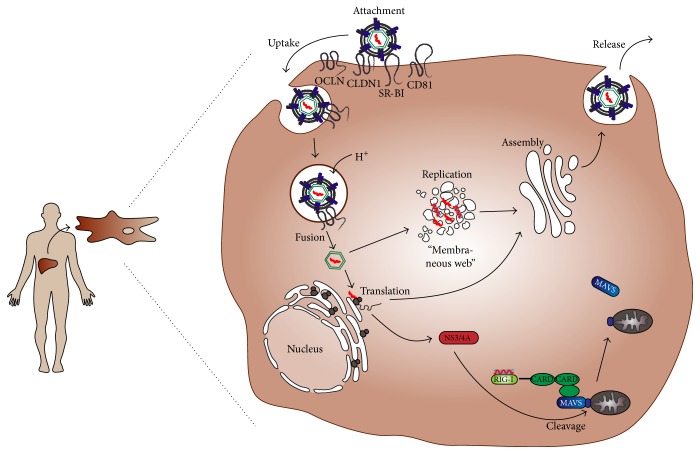Figure 2.
Hepatitis C virus life cycle and MAVS cleavage. Upon transmission, HCV enters hepatocytes in a multistep process involving the four host factors SR-BI, CD81, CLDN1, and OCLN. After uptake and pH-dependent fusion of viral and endosomal membranes, HCV releases its RNA genome into the cytosol of the host cell. Replication via double-stranded RNA intermediates takes place in the membranous web, consisting of ER-derived structures. HCV RNA is then translated into a precursor protein, which is cleaved into ten mature viral structural and nonstructural (NS) proteins. One of the latter, NS3/4A, can proteolytically cleave and by this inactivate MAVS, a RIG-I and MDA5 adaptor protein, which is important for mounting an innate immune response against HCV infection (see text and Figure 3 for details).

